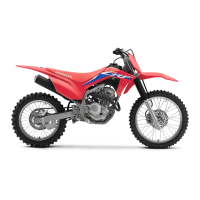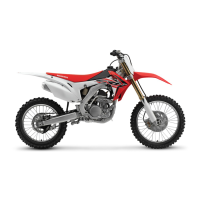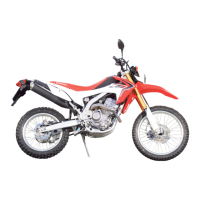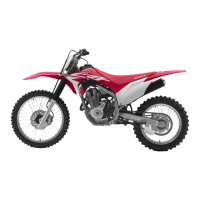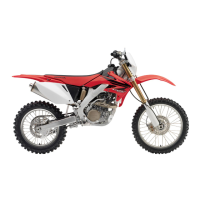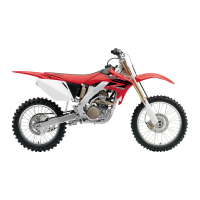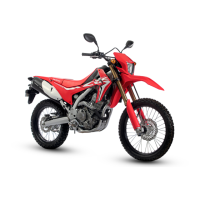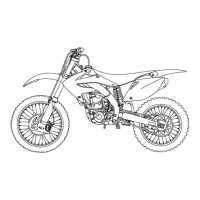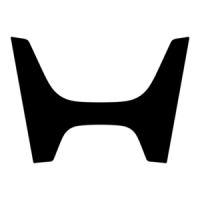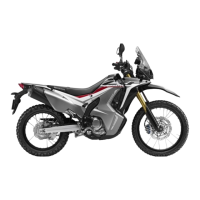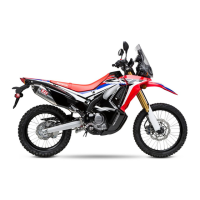Adjustments for Competition 135
Chassis Adjustments
Adjustments for Competition 135
The following suggestions may improve a
specific concern. Subtle changes in overall
handling may also be noted.
Rear End
If you have a problem with rear wheel traction,
raise the rear end of your CRF by increasing the
rear spring pre-load. Instead of running 100 mm
(3.9 in) of sag, you can run 90 mm (3.5 in) so the
rear of the bike will sit a little higher. This
should produce more traction because of the
change to the swingarm and the location of your
CRF’s centre of gravity.
If you have a problem with the steering head
shaking when you use the front brake hard or if
your CRF wants to turn too quickly, lower the
rear of the motorcycle by reducing the rear spring
pre-load. This will increase fork rake and trail
and should improve stability in a straight line.
The effective suspension travel will be
transferred toward the firmer end of wheel travel.
Keep the race sag adjustment (page 122) in the
90 – 110 mm (3.5 – 4.3 in) range.
Fork Height/Angle
Standard Position
The position of the outer tubes in the clamps is
not adjustable. Align the top of the outer tube (1)
with the top of the upper fork clamp (2).
(STANDARD POSITON)
Wheelbase
Adjusting your CRF’s wheelbase can offer subtle
changes in overall handling. You may adjust
wheelbase by adding or removing links on the
drive chain. If you change the wheelbase, be
sure to re-check race sag and adjust, if necessary.
In the past, a general rule was lengthen the
wheelbase to add straight line stability, shorten
the wheelbase to improve turning. However, we
suggest you do not lengthen the wheelbase of
your CRF unless you are racing on a track with
more fast sections than normal.
As a general recommendation, keep the
wheelbase as short as possible. This positions
the wheels closer together, improves turning
response, increase weighting (traction) on the
rear wheel, and lightens weighting on the front
wheel.
With your CRF, you will probably find that the
standard setting or a shorter wheelbase will offer
more overall benefits.
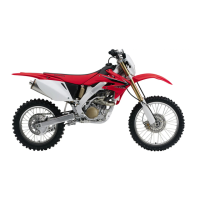
